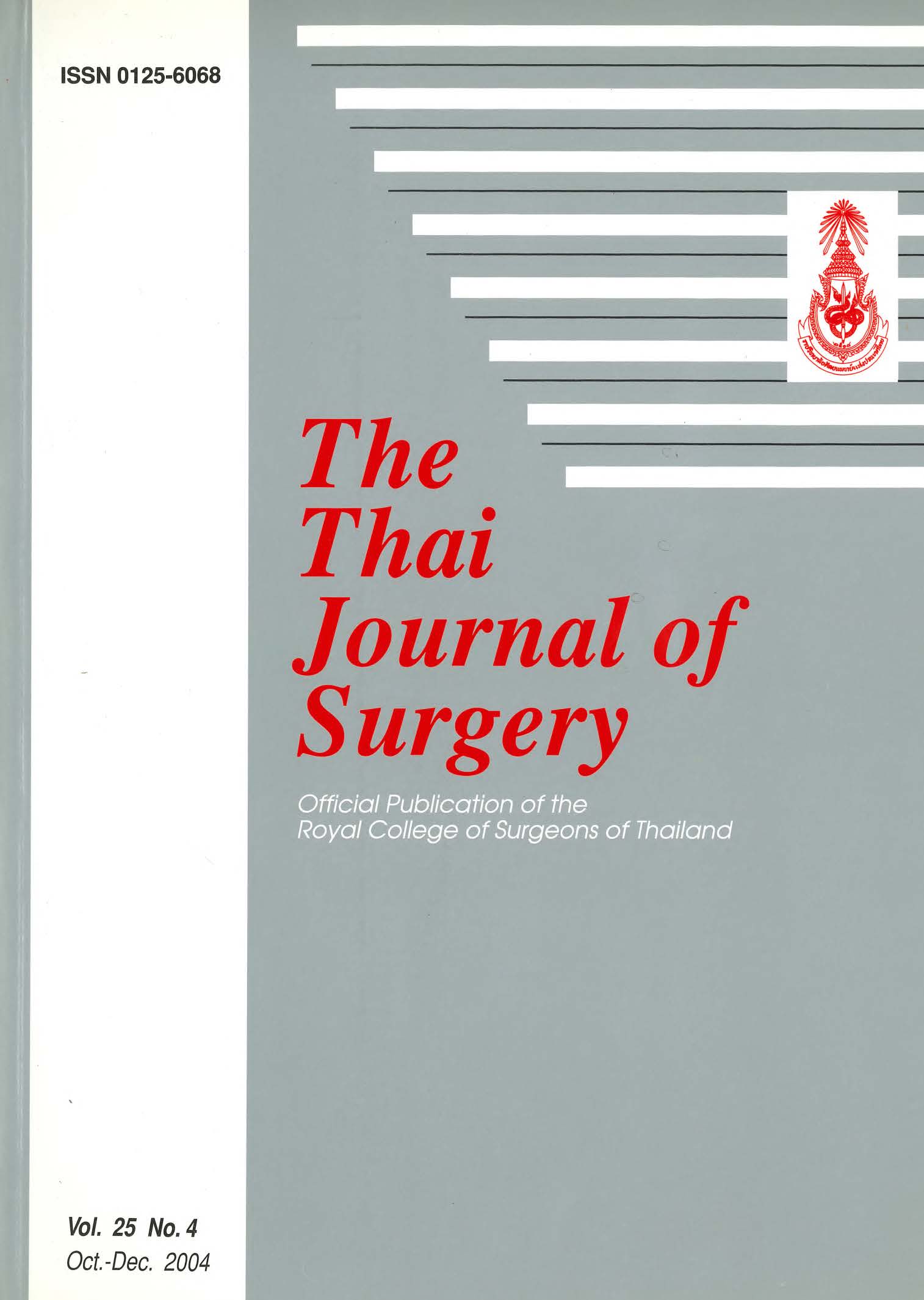Can "Fluctuation of the Fluid Level" Predict "the Position of the Tip of Central Venous Catheter" ?
Keywords:
venesection, the tip of central venous catheter, radiography, Basilic venous cutdownAbstract
Objective: To determine correlation between the clinical parameter (fluctuation of fluid level) and the position of the tip of central venous catheter.
Design: Prospective, observational study.
Setting: Patients in surgical ward or ICUs at Lerdsin Hospital, Rajvithi Hospital, and Nopparatana Rajathanee Hospital.
Patients: Consecutive patients (n = 80) requiring central venous cannulation.
Intervention: After each basilic venous cutdown, the patients were instructed to have chest radiography. The tip of central venous catheter was assumed to be in proper position if the fluctuation of fluid level reached 4 cm. Actual radiologic findings were subsequently compared against clinical predictions.
Main Outcome Measurements: Ability of the clinical parameter (good fluctuation of fluid level) to correctly predict the position of the tip of central venous catheter.
Results: Good fluctuation of fluid level can be obtained in 90 % of patients. The ability of this clinical parameter to predict the position of the tip of central venous catheter was quite high (94.2% sensitivity, 36.0% specificity, 90.2% positive predictive value, 50.0% negative predictive value).
Conclusion: This parameter is reproducible with high sensitivity, but low specificity. The number of patients may not be enough to draw a decisive conclusion.
References
2. Huyghens L, Sennesael J, Verbeelen D, Deraemaecker R, Corne L. Cardiothoracic complications of centrally inserted catheters. Acute Care 1985; 11:53-6.
3. Robinson JF, Robinson WA, Cohn A, Garg K, Armstrong JD, Perforation of the great vessels during central venous line placement, Arch Intern Med 1995; 155: 1225-8.
4. Collier PE, Goodman GB. Cardiac tamponade caused by central venous catheter perforation of the heart: a preventable complication, J Am Coll Surg 1995; 181:459-63,
5. McGee WT, Ackerman BL, Rouben LR, Prasad VM, Bandi V, Mallory DL. Accurate placement of central venous catheters: a prospective, randomized, multicenter trial. Crit Care Med 1993;21: 1118-23.
6. Dresser LP, McKinney WM. Anatomic and pathophysiologic studies of the human internal jugular valve. Am J Surg 1987;154:220-4.
7. Fisher J. Jugular venous valves and physical signs. Chest 1984;85:685-6.
8. Silva MA, Deen Kl, Fernando DJ, Sheriffdeen AH. The internal Jugular vein valve may have a significant role in the prevention of venous reflux: evidence from live and cadaveric human subjects. Clin PhysioI Funct Imaging 2002; 22:202-5.
9. Simon G, Hamilton WJ. X-Ray Anatomy. 1978.
10. Food and Drug Administration Task Force, Precautions necessary with central venous catheters. FDA Drug Bulletin, July 1989:15-16.
11. Scott WL. Central venous catheters: an overview of Food and Drug Administration activities, Surg Oncol Clin North Am 1995;4:377-92.
12. Fisher J, Vaghaiwalla F, Tsitlik J, et al. Determinants of clinical significance of jugular venous valve competence. Circulation 1982; 65: 88-196.
Downloads
Published
How to Cite
Issue
Section
License
Articles must be contributed solely to The Thai Journal of Surgery and when published become the property of the Royal College of Surgeons of Thailand. The Royal College of Surgeons of Thailand reserves copyright on all published materials and such materials may not be reproduced in any form without the written permission.



